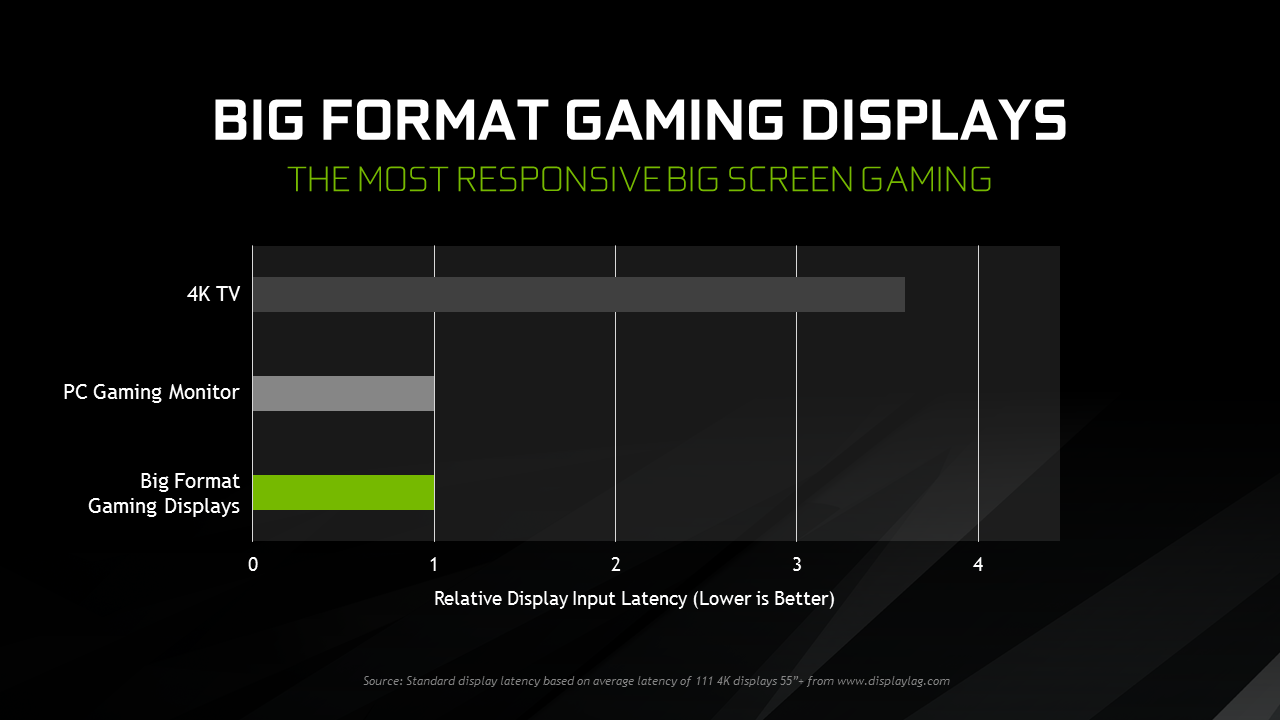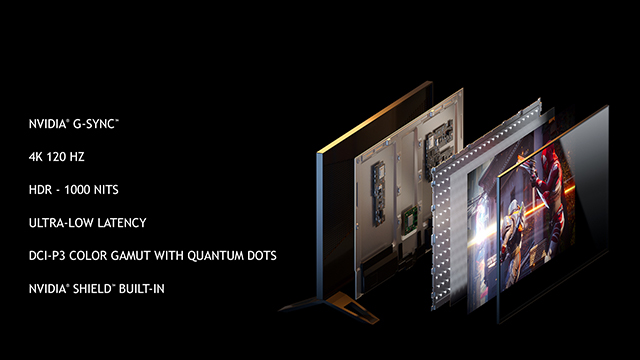


BFGD is an NVIDIA standard. Other manufacturers will bring out their very own BFGD-certified displays to the market.
Specs:
65 inch.
4k resolution and 120hz refresh rate.
Uses Quantum Dots to support DCI P3 color space.
Up to 1000nits.
Direct Array Backlight aka Full Array Local Dimming.
Ultra Low Latency.
Built-in Nvidia Gsync.
Built-in Nvidia Shield aka the display's "Smart TV" component.
First BFGD screens that will reach the market comes from ACER, ASUS, and HP:
NVIDIA said:The first BFGDs, coming later this year from ACER, ASUS and HP, are 65 inches, run at 4K at 120Hz, have G-SYNC technology, HDR with 1000 nit peak brightness, and an integrated NVIDIA SHIELD, giving you instant access to Netflix, Amazon Video and YouTube at 4K, NVIDIA GameStream, Android games and apps, and much more.
...General availability is expected this summer when pricing and further specifications will be announced.
Last edited:
![[H]ard|Forum](/styles/hardforum/xenforo/logo_dark.png)